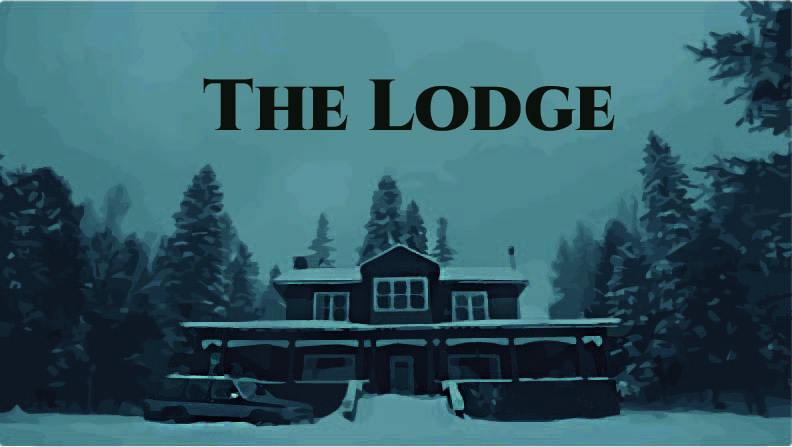Roadrunner Films: ‘The Lodge’
November 3, 2020
“The Lodge” sets the stage for a slow, stylized descent into a Christmas nightmare. Set to a backdrop of hymns, madness and repentance, the film conjures an interesting foray into fanatical religious ideologies.
“The Lodge” is a brooding, melancholic take on the idea of gaslighting and purgatory — both figuratively and literally. Written and directed by Severin Fiala and Veronika Franz, the film follows soon-to-be stepmother Grace and her future stepchildren, Mia and Aidan, as well as her love interest, Richard. The four escape to Richard’s cabin in the months following his first wife’s brutal exit. The film briefly addresses this broken relationship in the beginning. This quickly turns and culminates in a shocking, visceral action by the mother, Laura.
From the beginning of the film, it establishes itself in its bleak narrative and off-kilter structure. Keen viewers might recognize the film’s similarities to “Hereditary’s” use of dollhouses in its narrative. Fiala and Franz use dollhouses as a subtle device in their storytelling, often providing glimpses of the dollhouse before an action occurs in the film.
“The Lodge” puts the audience in the mind of Grace, quite literally, near the halfway point. A scene in the film uses a gaslight to give the characters warmth. I saw this as a blatant tool masterminded by the children to stoke fear into Grace. In the end, the consequences of the children’s actions left me questioning the choice.
Grace, the lone survivor of a Heaven’s Gate-esque cult, seems to really be trying to escape the clutches of her roots. The cult happened to have been helmed by her father and was quite literal in their wish to depart from the physical world. This is shown to us in a manner integral to the film’s third act.
Where this film excels is in its cinematography and sound design. Both are used brilliantly throughout the film, especially as the audience starts to see Grace’s psyche teeter closer and closer to her breaking point. The droning score from Danny Bensi & Saunder Jurriaans is effective in driving forward the film’s dreadful climax.
Another interesting takeaway is the film’s substantial use of religious themes and iconography. There’s a haunting portrait of the Virgin Mary in the house towering over the characters. Crosses and flashbacks to Grace’s cult appear often, reinforcing the cult’s dominance over Grace. As mentioned above, the film culminates in a graphic, though expected, end for its characters, all under the guise of the film’s subject matter.
While “The Lodge” is aesthetically interesting and handles its idea of cult tendencies well, certain logical ideas and choices by certain characters lean toward dismissive and questionable. Despite this, the pacing and editing of the film help here. However, these decisions aside, the film deserves praise for its interesting study on faith, purgatory and escaping your past. If you can overcome the film’s logic, then you’re in for a wild ride.








